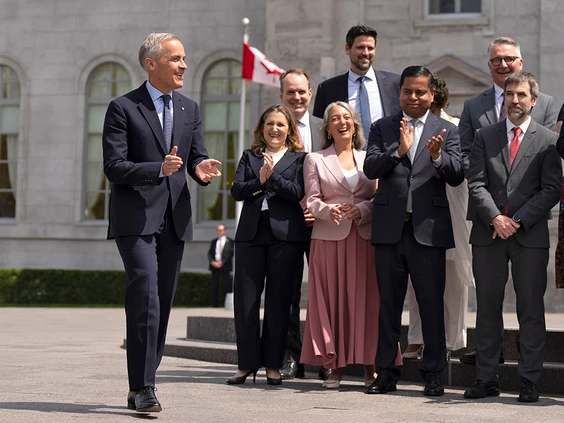Mark Carney, former Governor of the Bank of Canada and Bank of England, has recently entered the political arena. Many see him as a potential future prime minister, but just like his predecessors, he is already facing early challenges that were not expected.
Carney recently announced his new cabinet, a moment that was meant to be celebrated, but it quickly turned into the beginning of political difficulties. Experts say the day after a cabinet is sworn in is often when things start to go wrong.
Carney’s early decisions have raised concerns. While some of these moves may seem small, they could create problems in the coming months. Political commentator John Ivison points out that all leaders begin their terms with optimism, but once the ceremonies are over, reality sets in. The decisions made during the first few days can have lasting effects.
Carney’s cabinet choices have sparked a great deal of debate. Some believe he surrounded himself with loyal allies rather than strong performers. Others feel he overlooked the importance of regional balance. In Canadian politics, it’s crucial that all provinces and communities feel adequately represented.
Some insiders suggest that Carney is trying to align himself with people who share his viewpoints. Critics warn, however, that this could lead to a lack of diverse perspectives, which might harm decision-making processes.
Carney is not the first prime minister to face difficulties with cabinet appointments. Prime ministers in the past, including Justin Trudeau and Stephen Harper, have experienced challenges shortly after their cabinets were formed.
In 2015, Trudeau received praise for creating a gender-balanced cabinet. However, critics soon questioned the experience levels of certain ministers. Similarly, Stephen Harper faced regional complaints after forming his cabinet in 2006. These early criticisms shaped public opinion of both leaders.
Carney’s entry into politics comes with high expectations due to his global financial experience. However, managing a country’s affairs is very different from managing a central bank. Political decisions must consider public opinion, emotions, and party loyalty, which makes it much harder to please everyone.
Reports indicate that Carney’s team is under pressure to address key issues like housing, healthcare, and inflation—issues that are top concerns for Canadian voters.
Carney could benefit from the lessons of past leaders like Paul Martin and Jean Chrétien. Both were praised for their early cabinet selections but later faced challenges because of internal issues.
Paul Martin, who served as finance minister before becoming prime minister, faced criticism when his leadership style became too cautious. In contrast, Chrétien was known for his strong leadership but was often accused of ignoring advice from others.
Carney will need to balance firmness with flexibility. Adapting his approach when necessary and listening to different voices will be essential for his success.
Today’s leaders face greater scrutiny than ever before. Social media, 24-hour news cycles, and instant public feedback make it difficult to avoid criticism. Even minor errors can become viral and damage a leader’s reputation quickly.
For Carney, this means he will need to have a strong communication strategy. His team must be able to respond to criticism quickly and clearly explain their decisions.
As reported by inews.best, Canadians are looking for leaders who are not only competent but also relatable. Carney must show that he understands the concerns of everyday people, not just global financial markets.
Mark Carney’s future in Canadian politics is still uncertain. He has the opportunity to build a strong team and shape bold policies. But the early days of leadership are often the hardest.
If he can handle criticism, learn from his mistakes, and adapt his approach, Carney could rise to the top. However, if he fails to adjust, he risks making the same mistakes that have hurt many leaders before him.
In Canadian politics, the real test begins after the cameras are gone.

